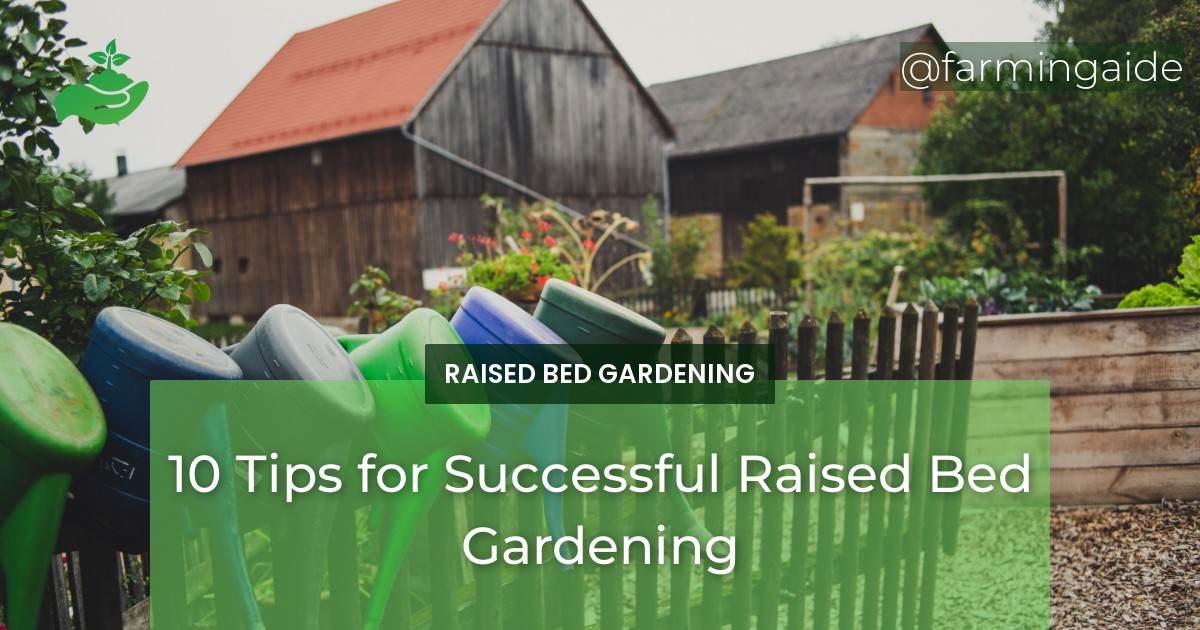Are you looking to start a raised bed garden? Raised bed gardening is a popular method of gardening that offers many benefits over traditional gardening methods.
In this article, we will provide you with 10 tips for successful raised bed gardening. From bed construction to plant selection, we’ve got you covered!
Importance of Proper Bed Construction and Dimensions
Before you start planting, it’s important to consider the construction and dimensions of your raised bed. Here are some things to keep in mind:
Size Matters
- The ideal width of a raised bed is 3-4 feet
- The length of your bed will depend on your available space
- Make sure your bed is accessible from all sides for easy planting and harvesting
Material Choices
- Popular materials for raised beds include wood, metal, and stone
- Avoid using treated lumber or railroad ties that may contain harmful chemicals
- Consider using recycled materials to reduce costs and environmental impact
Bed Height
- The height of your bed will depend on your personal preference and physical abilities
- Aim for a height of at least 12 inches to provide ample soil depth for root growth
- Consider building taller beds for those with mobility issues or for easier accessibility
Choosing the Right Soil Mix
The key to a successful raised bed garden is good soil. Here’s what you need to know:
Components of Soil
- A good soil mix for raised beds should include a balance of sand, silt, and clay
- Organic matter such as compost and manure can improve soil structure and fertility
- Consider adding vermiculite or perlite to improve drainage and aeration
Soil Testing
- Testing your soil can help you determine its pH, nutrient levels, and any potential contaminants
- You can purchase a soil testing kit or send a sample to a soil testing lab for analysis
- Based on the results, you can adjust your soil mix to meet the needs of your plants
Soil Amendments
- Amendments such as lime, sulfur, and compost can help adjust soil pH and improve nutrient levels
- Consider adding mycorrhizal fungi to help improve plant root growth and nutrient uptake
- Be cautious with adding too much fertilizer, as it can harm your plants and pollute the environment
ALSO READ
Plant Selection for Raised Beds
Choosing the right plants for your raised bed can help maximize your garden’s productivity. Here are some considerations:
Companion Planting
- Companion planting involves planting different plants together that benefit each other
- For example, planting marigolds with tomatoes can repel pests and improve soil health
- Research companion planting combinations to find the best matches for your garden
Crop Rotation
- Crop rotation involves planting different crops in different areas each year to prevent soil depletion and disease
- Consider rotating crops based on their nutrient needs and plant families
- Keep a garden journal to keep track of your crop rotation schedule
Vertical Gardening
- Vertical gardening involves training plants to grow upwards to save space and increase productivity
- Popular Vertical gardening techniques include trellising, staking, and using hanging baskets
- Consider using Vertical gardening for plants such as tomatoes, cucumbers, and peas
Watering Techniques
Proper watering is essential for a healthy raised bed garden. Here are some tips:
Irrigation Systems
- Drip irrigation systems can help conserve water and deliver it directly to your plants’ roots
- Sprinkler systems can be used but may waste more water and increase the risk of disease
- Consider using a rain barrel to collect and store rainwater for your garden
Proper Watering Schedule
- Water your raised bed deeply and infrequently to encourage deep root growth
- Water in the early morning to reduce evaporation and allow foliage to dry during the day
- Be mindful of your plants’ water needs and adjust your watering schedule accordingly
Mulching
- Mulching can help retain soil moisture, suppress weed growth, and regulate soil temperature
- Popular mulching materials include straw, wood chips, and compost
- Apply a layer of mulch around your plants, but avoid covering the plant stems
By following these 10 tips for successful raised bed gardening, you can enjoy a bountiful and beautiful garden in no time. Happy gardening!
Can Raised Bed Gardening Tips Also Apply to Sandy Soil Gardens?
Yes, raised bed gardening tips can be applied to sandy soil gardens. To improve water retention and nutrient levels, adding organic matter like compost can help. Some of the best flowers for sandy soil include lavender, black-eyed Susans, and butterfly weed, which thrive in well-drained soils.
RELATED ARTICLES:


